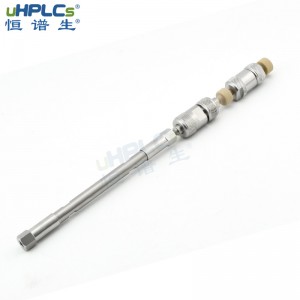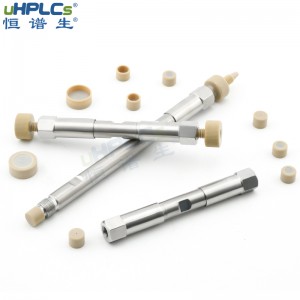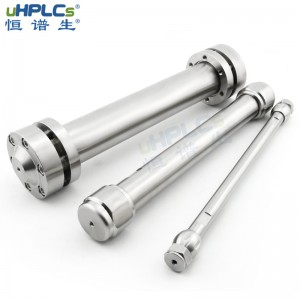Gas chromatography (GC) is an ideal technique for separating and identifying low molecular weight gases or volatile liquids. It has been widely used in industry, agriculture, national defense, construction and scientific research. Gas chromatography can be divided into gas solid chromatography and gas liquid chromatography. The principle of high performance liquid chromatography is the same as that of gas chromatography. However, gas chromatography is not suitable for non-volatile and thermally unstable materials, while liquid chromatography is not limited by the volatile and thermal stability of the sample. Some samples cannot pass through the column because they are difficult to vaporize. Thermally unstable materials will decompose when heated, and gas chromatography is not suitable. This limits the use of gas chromatography.
It is important to have a clear understanding of the differences between the two separation techniques so that you can choose the best technique for the separation you need. This article highlights the main differences between the two technologies.
The mobile phase used in HPLC is a liquid, while in gas chromatography it is a gas. Due to the high density and viscosity of the liquid, a pump is used to push the pressure of the mobile phase through the HPLC column. Therefore, the back pressure of liquid chromatography is usually very high, such as ultra-high pressure liquid chromatography. Too high back pressure will impose a burden on the liquid phase system, so proper control of the pressure at an appropriate level is helpful for the normal operation of our analysis and test. The liquid chromatography column, guard c

olumn and in-line filter of UHPLCS can achieve low back pressure and small dead volume to avoid the impact on the analysis results.
Samples analyzed on HPLC are usually not heat resistant and degrade at higher temperatures, whereas in GC the solutes can withstand temperatures up to 400℃ and are volatile. The sample used for HPLC analysis is usually liquid or a solid dissolved in the liquid. In addition to liquids and dissolved solids, GC can also handle gases. GC samples have lower molecular weights, while HPLC can be used to analyze high molecular weight compounds covering a range of samples from high molecular weight polymers to large biomolecules.
Column Size
Liquids have a higher density and viscosity than gases, so HPLC columns are usually shorter and wider. Typical sizes are 10 or 25cm with a diameter of 0.46cm.

However, larger columns have also been used for preparation-scale applications, such as φ10, 20, and 30 liquid chromatography columns.
UHPLCS offers analysis and preparation of liquid chromatography columns with a variety of diameters. Column is made of stainless steel 316L. The inner wall of the stainless steel column is polished to reduce the wall effect, improve the column effect and achieve short balance time, high flow rate, low back pressure, shorten the analysis time, save solvents and reduce costs.
On the other hand, longer columns with narrower inner diameters are recommended for GC because of the lower gas density and viscosity. Capillary columns can reach several meters in length.
Working Temperature
Due to the thermal instability of the compounds, HPLC operations are usually performed at ambient temperatures, such as when liquid chromatography columns are placed in a thermostat. The ambient temperature of gas chromatographic column operation is not harsh.
Working Pressure
Due to the high density and viscosity of liquids, high pressures in the 5000–6000 psi range are required for common analytical separations. UHPLC system is capable of operating in the 15,000-18,000 psi range. Carrier gas in GC columns requires lower pressures in the 150-200 psi range.
Post time: Apr-02-2021







